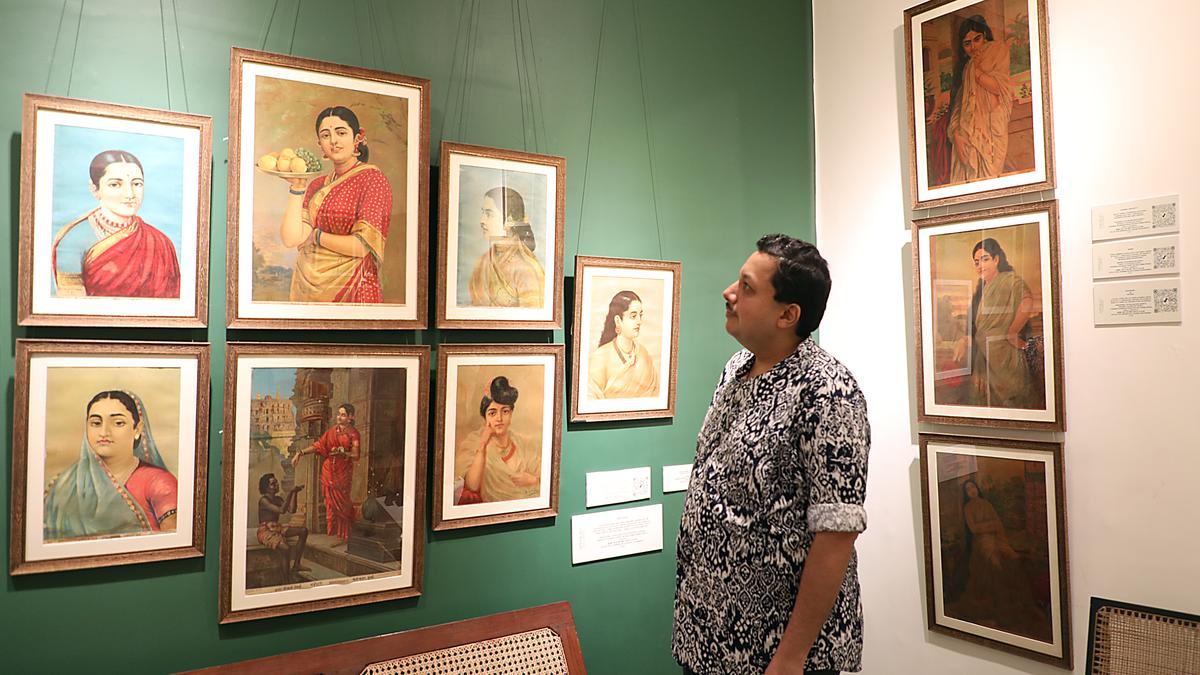
How to rescue a Ravi Varma? This Chennai exhibit dives deep into his life and art
The Hindu
Lawyer and art collector Ganesh V Shivaswamy's six-volume series on Raja Ravi Varma began when he was 16. His recent exhibition at Apparao Gallery, featuring 126 chromolithographs, included talks on the artist's legacy and copyright laws. Ganesh's research took him to Manipal's Hasta Shilpa Village and Kilimanoor Palace in Kerala. He discovered photos of models who posed for Ravi Varma's paintings. His journey with the artist's work began by chance when he was prescribed art therapy. The Ravi Varma Fine Art Lithographic Press made art accessible to the common man, but closed in the 1980s. Ganesh rescued prints from demolition contractors and antique dealers. His collection is a tribute to the artist who made art democratic. Show on till Nov 18.
Ganesh V Shivaswamy’s work on Raja Ravi Varma was put together with love, serendipity and a scanner in his hand luggage. A lawyer and accidental art collector, Ganesh has been working on a six-volume series titled An Everlasting Imprint, on the legacy of Ravi Varma: a project that began when he was 16 years old.
At the Apparao Gallery, he curated a recent exhibition, titled Raja Ravi Varma — A cultural revolution. At the show, which featured 126 chromolithographs (out of which 122 were from his own collection) from the legendary Ravi Varma Press, Ganesh did an illuminating deep dive into the popular artist’s work over the weekend. The two days included talks on everything from the artist’s legacy to copyright laws.
At the event, he walks visitors though the exhibit, divided by the artist’s main themes: divinities and sages, the Ramayana, the Mahabharata, leaders, damsels and more. Speaking of his many years of collecting the prints, and research, Ganesh says, “I did not want my books associated with a borrowed narrative — so I asked, ‘Is there something new?’” He adds with a chuckle, “I began to travel with a really high-end scanner, which I had to carry as hand baggage as it was delicate.”
His research took him to Manipal’s Hasta Shilpa Village, which has a well- preserved Raja Ravi Varma Archival Museum, and — of course — the artist’s home, Kilimanoor Palace in Kerala.“I would sit on the floor at the palace, with the books on a mat and scan every page. On one of the trips, I asked them ‘Where is the box?,’ and I still don’t know what prompted me to ask,” says Ganesh.
He was led to a cavernous room with a huge box in the centre. “We opened it and discovered photographs of many women who posed for Raja Ravi Varma’s paintings!” This find enabled him to start tracking the families of the models and learn who at least some of them were. “They had notations at the back saying, for example, “Gauri, taken in Benares. Or Raji, in Bombay,” says Ganesh.
His journey with the artist’s work similarly began by chance. “I’m a cancer survivor,” he states, settling for a chat after a lively discussion on his work at the gallery. Explaining that he was unwell for much of his childhood, he says, “The cancer affected my optic nerve, so my surgeon suggested I start looking at art as therapy.” At 17, he began looking around galleries, stumbled upon a Ravi Varma chromolithograph, and started his collection.
“What started as a prescription became an attraction,” says Ganesh, adding that he has always been fascinated by how the artist’s work reached the public via the printing press. “It made art accessible to the common man.”

 Run 3 Space | Play Space Running Game
Run 3 Space | Play Space Running Game
 Traffic Jam 3D | Online Racing Game
Traffic Jam 3D | Online Racing Game
 Duck Hunt | Play Old Classic Game
Duck Hunt | Play Old Classic Game

